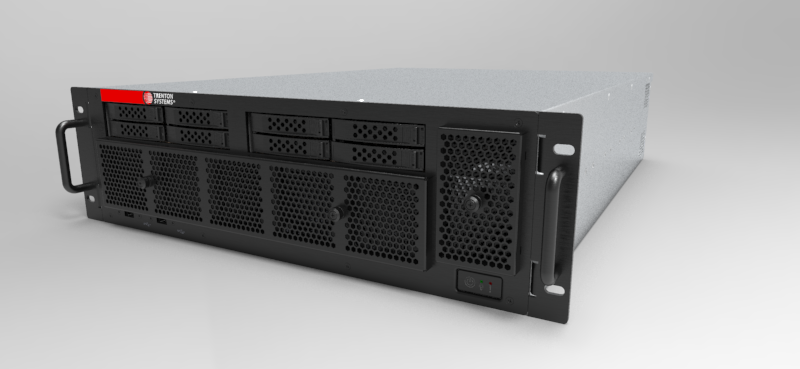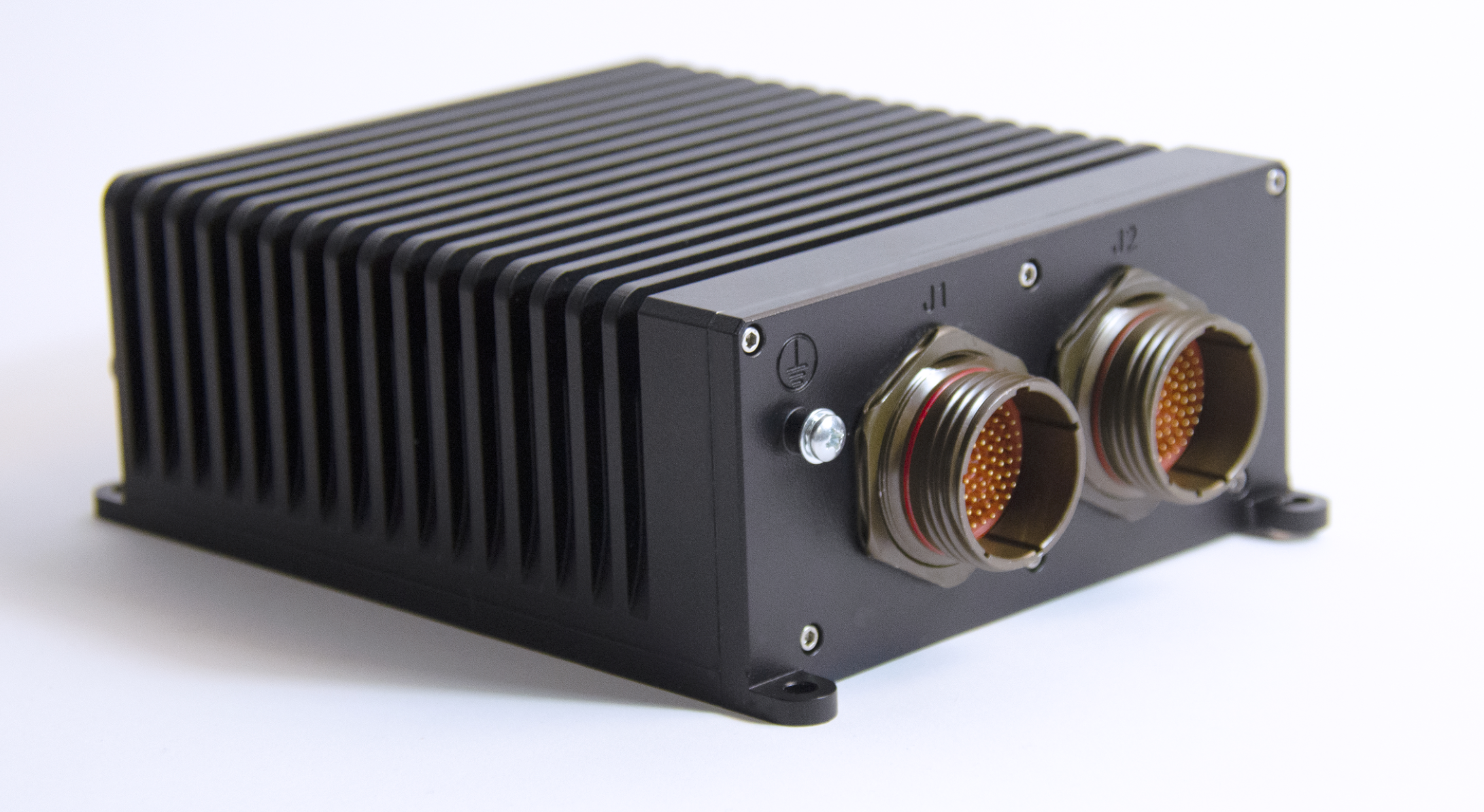Share this
SIGINT vs. COMINT vs. ELINT: Key Differences and Must-Know Use Cases
by Christopher Trick on Oct 17, 2022 2:21:48 PM

Intelligence-driven decisions are at the heart of many operations across the government, military, and critical infrastructure sectors, making the ability to gather, process, and analyze all forms of signals and data integral to mission success.
In this blog, you'll learn more about the differences between SIGINT (signals intelligence), COMINT (communications intelligence), and ELINT (electronic intelligence), their various use cases, and how Trenton's solutions enhance each.
What is SIGINT?
SIGINT, or signals intelligence, refers to any intelligence-gathering method that involves the interception and analysis of signals emitted by enemy communications systems, radar, and weapons.
SIGINT plays a vital role in national security by providing the information needed to see into an adversary's capabilities, actions, and intentions, which, in turn, help military personnel stay vigilant of current and future threats.
Within the aerospace and defense sectors, signals intelligence is primarily gathered through unmanned aerial vehicles (UAVs) that are equipped with powerful infrared sensor cameras, ground stations, and Light and Imaging Detection (LIDAR) as well as synthetic aperture radar systems that gather raw intelligence.
When this information is captured, it then needs to be translated and interpreted, so it can be analyzed and used to make key decisions in real-time.
There are two subcategories of SIGINT: COMINT and ELINT. Let's take a look at each.
What is COMINT?
COMINT, or communications intelligence, refers to any intelligence that is gained from communication between people and/or groups.
COMINT, however, refers only to signals that contain speech or text, such as text messages, telephone conversations, radio calls, and online interactions.
What is ELINT?
ELINT, or electronic intelligence, refers to any intelligence that is gathered from electronic signals; in other words, only non-communications intelligence.
ELINT signals include radio or electromagnetic pulses and signals that are emitted from radars, missiles, guidance systems, and aircrafts.
ELINT has three subsections: TechELINT, OpELINT, and TelELINT. Let's take a look at each.
TechELINT
TechELINT, or technical ELINT, refers to the interception, modes of operation, identification, recording, and documentation related to electromagnetic energy in order to figure out the location of the emitter or other critical information.
TechELINT plays a big part in the design of radar detection, countermeasure, and counter-weapons equipment.
OpELINT
OpELINT, or operational ELINT, concentrates on searching, intercepting, and locating specific ELINT targets to determine their operational patterns. Information gathered is used to exploit target equipment.
OpELINT also provides threat assessments--this is known as tactical ELINT--to support operational planners and tactical commanders on the battlefield.
TelELINT
TelELINT, or telemetry intelligence, is an older form of ELINT that focuses on collecting, analyzing, and reporting foreign telemetry signals.
TelELINT is now called FISINT, foreign instrumentation signals intelligence, and its operation closely resembles TechELINT.
TelELINT provides critical information on foreign missiles and space vehicles while they are being tested as well as operational information on foreign satellites and vehicles.
 SIGINT, or signals intelligence, refers to any intelligence-gathering method that involves the interception and analysis of signals emitted by enemy communications systems, radar, and weapons.
SIGINT, or signals intelligence, refers to any intelligence-gathering method that involves the interception and analysis of signals emitted by enemy communications systems, radar, and weapons.
SIGINT, COMINT, and ELINT Use Cases
SIGINT, COMINT, and ELINT help to greatly enhance a variety of applications across the battlespace.
At a high level, SIGINT's greatest capability is that it allows military personnel to collect and make sense of signals in a variety of forms and across multiple domains.
Let's take a look at a few examples in more detail.
Electronic Warfare (EW)
Electronic warfare (EW) refers to military action that involves accessing and exploiting the electromagnetic spectrum while denying adversaries the ability to do the same; it also involves the use of technology to defend against attacks on spectral capabilities and the offensive use of directed energy weapons.
There are three subcategories of EW: electronic attack (EA), electronic protection (EP), and electronic warfare support (EWS). Let's take a look at each:
- Electronic attack: This involves offensive use of directed energy against enemy forces.
- Electronic protection: This involves defensive use of directed energy against enemy forces.
- Electronic warfare support: This involves locating and identifying sources of electromagnetic energy signals to support decision-making.
Electronic warfare support is where SIGINT really comes into play. SIGINT helps EWS machines to collect actionable intelligence, which can then be interpreted, analyzed, and used for decision-making in real-time.
For instance, SIGINT can helps EWS systems detect the source of an electromagnetic signal, the type of equipment that is generating that signal, and any other relevant data.
JADC2 and C6ISR
JADC2, Joint-All Domain Command and Control, refers to the DoD's initiative to revitalize the military's C2 (command and control) infrastructure by establishing an integrated network of sensors, systems, and warfighters across all domains.
C6ISR--Command, Control, Communications, Computers, Cyber-Defense, Combat Systems, Intelligence, Surveillance, and Reconaissnace--is an amalgamation of all technologies and practices that inform and support command and control.
In addition to ensuring open communication and connectivity between domains, a critical component of both JADC2 and C6ISR is data collection.
SIGINT plays a major role here by detecting, identifying, and locating enemy communications.
The data collected also helps military personnel gain a competitive advantage at sea, on land, in the air, in space, or within the cyber landscape.
As the tactics and technology used by adversarial forces become increasingly advanced, having an interconnected web of compute devices allows for immediate, actionable insights, enabling swift response to present or rising enemy threats anywhere, anytime.
How does Trenton fit in?
Trenton's line of custom, USA-made, high-performance computing solutions, in rack mount or small form factor, greatly bolster SIGINT capabilities through quickly collecting vast amounts of data for real-time analysis.
Our 5G-powered solutions enhance AI/ML/DL workloads, big data analytics, and I/O at the tactical edge. This, in turn, helps to increase situational awareness, enhance decision making capabilities, and shorten response times.
With Intel® SmartEdge and Intel® FlexRAN, our systems provide virtualized, low-latency networking to enhance compute power and connectivity within communications-denied and -contested environments.
In addition, our solutions are zero-trust architected and protect data-at-rest, in-transit, and in-use with advanced, multi-layer cybersecurity technologies across the hardware, firmware, software, and network stack.
Let's take a look at three of our solutions: the 1U BAM FM, the 3U BAM XRS, and the TAC.
1U MBS.FM
The 1U MBS.FM is a rack server that provides configurability, connectivity, and compute power to strengthen AI/ML/DL workloads and big data analytics, designed in a secure, SWaP-optimized, modular blade enclosure.
How does the 1U MBS.FM support SIGINT?
The 1U MBS.FM supports SIGINT by maximizing compute density to reduce downtime and ensure ease-of-use.
This server contains two dual-Intel® Xeon® CPU blades, allowing users to run multiple accelerated applications on the same server at the edge. This helps to greatly reduce the physical footprint (space the server takes up) and total cost of ownership, which, in turn, extends the system's lifecycle.
In addition, I/O board is fixed, and the blades easily detach from the front without having to remove the cables in the back, making configurations and upgrades much easier as workloads evolve.
All of this allows military personnel to detect signals and other data with unprecedented speed and precision to effectively detect, track, and engage with enemy threats.

3U BAM
The 3U BAM is a rack server providing maximum storage, processing, and ruggedization designed in a SWaP-optimized chassis to accelerate and sustain ever-evolving edge compute applications.
How does the 3U BAM support SIGINT?
The 3U BAM supports SIGINT through its storage, security, and intelligence capabilities.
This server contains eight front-removable, high-speed SSDs, which means that data can be stored and retrieved within a matter seconds. This provides warfighters with the critical intelligence that they need to craft a timely, effective response to enemy threats across all domains.
The 3U BAM supports a mix of FIPS 140-2 and FIPS 140-3 self-encrypting drives (SEDs)--NVMe, SATA, and SAS. In addition to maximizing storage capacity, these drives prevent unauthorized personnel from stealing, deleting, or manipulating data, which can impede a system's functionality.
This server can also support multiple NVIDIA A100 GPUs to allow for data to be processed and analyzed simultaneously, delivering key insights in minimal time.

TAC
The TAC (Tactical Advanced Computer) is a ruggedized, secure, SWaP-C optimized small form factor mission computer designed in a fanless, sealed enclosure with the latest in embedded computing technology.
How does the TAC support SIGINT?
The greatest boon to SIGINT that the TAC provides is that it has two military 38999 connectors, which are designed to enhance and consolidate cable-to-panel I/O applications.
Ruggedized and tested to the most stringent military standards, the TAC can withstand extreme shock, vibration, temperatures, and humidity to ensure peak performance in the harshest of environments.
38999 connectors enhance this ruggedization by allowing for robust transmission of high-frequency signals and provide EMI (electromagnetic interference) filtering. As a result, crucial information that is needed to formulate responses is delivered immediately, and harmful signals are kept away from interfering with components inside the system as well as with existing infrastructure.
38999 connectors also help to maximize the speed and efficiency of I/O capabilities, and they ensure effective operation through keeping out dust, dirt, water, and debris--a key factor in IP67 certification.

Final thoughts
SIGINT, COMINT, and ELINT play a crucial role in providing key insights for intelligence-driven operations across the modern, multi-domain battlespace.
No matter the time or place, it is critical that military personnel stay aware of existing or potential enemy threats, so they can achieve mission success and, as a result, preserve their country's national security.
Here at Trenton Systems, our customer-first approach, flexibility in engineering design, and ability to seamlessly integrate next-gen technologies into our high-performance computing solutions allow us to strengthen intelligence gathering at the strategic, tactical, and operational levels.
If you want to learn more about how we can help you craft a custom, American-made computing solution to enhance your SIGINT, COMINT, and ELINT capabilities, just reach out to us anytime here.
We'd love to chat or answer any questions you may have. 🙂
Share this
- High-performance computers (42)
- Military computers (38)
- Rugged computers (32)
- Cybersecurity (25)
- Industrial computers (25)
- Military servers (24)
- MIL-SPEC (20)
- Rugged servers (19)
- Press Release (17)
- Industrial servers (16)
- MIL-STD-810 (16)
- 5G Technology (14)
- Intel (13)
- Rack mount servers (12)
- processing (12)
- Computer hardware (11)
- Edge computing (11)
- Rugged workstations (11)
- Made in USA (10)
- Partnerships (9)
- Rugged computing (9)
- Sales, Marketing, and Business Development (9)
- Trenton Systems (9)
- networking (9)
- Peripheral Component Interconnect Express (PCIe) (7)
- Encryption (6)
- Federal Information Processing Standards (FIPS) (6)
- GPUs (6)
- IPU (6)
- Joint All-Domain Command and Control (JADC2) (6)
- Server motherboards (6)
- artificial intelligence (6)
- Computer stress tests (5)
- Cross domain solutions (5)
- Mission-critical servers (5)
- Rugged mini PCs (5)
- AI (4)
- BIOS (4)
- CPU (4)
- Defense (4)
- Military primes (4)
- Mission-critical systems (4)
- Platform Firmware Resilience (PFR) (4)
- Rugged blade servers (4)
- containerization (4)
- data protection (4)
- virtualization (4)
- Counterfeit electronic parts (3)
- DO-160 (3)
- Edge servers (3)
- Firmware (3)
- HPC (3)
- Just a Bunch of Disks (JBOD) (3)
- Leadership (3)
- Navy (3)
- O-RAN (3)
- RAID (3)
- RAM (3)
- Revision control (3)
- Ruggedization (3)
- SATCOM (3)
- Storage servers (3)
- Supply chain (3)
- Tactical Advanced Computer (TAC) (3)
- Wide-temp computers (3)
- computers made in the USA (3)
- data transfer (3)
- deep learning (3)
- embedded computers (3)
- embedded systems (3)
- firmware security (3)
- machine learning (3)
- Automatic test equipment (ATE) (2)
- C6ISR (2)
- COTS (2)
- COVID-19 (2)
- CPUs (2)
- Compliance (2)
- Compute Express Link (CXL) (2)
- Computer networking (2)
- Controlled Unclassified Information (CUI) (2)
- DDR (2)
- DDR4 (2)
- DPU (2)
- Dual CPU motherboards (2)
- EW (2)
- I/O (2)
- Military standards (2)
- NVIDIA (2)
- NVMe SSDs (2)
- PCIe (2)
- PCIe 4.0 (2)
- PCIe 5.0 (2)
- RAN (2)
- SIGINT (2)
- SWaP-C (2)
- Software Guard Extensions (SGX) (2)
- Submarines (2)
- Supply chain security (2)
- TAA compliance (2)
- airborne (2)
- as9100d (2)
- chassis (2)
- data diode (2)
- end-to-end solution (2)
- hardware security (2)
- hardware virtualization (2)
- integrated combat system (2)
- manufacturing reps (2)
- memory (2)
- mission computers (2)
- private 5G (2)
- protection (2)
- secure by design (2)
- small form factor (2)
- software security (2)
- vRAN (2)
- zero trust (2)
- zero trust architecture (2)
- 3U BAM Server (1)
- 4G (1)
- 4U (1)
- 5G Frequencies (1)
- 5G Frequency Bands (1)
- AI/ML/DL (1)
- Access CDS (1)
- Aegis Combat System (1)
- Armed Forces (1)
- Asymmetric encryption (1)
- C-RAN (1)
- COMINT (1)
- Cloud-based CDS (1)
- Coast Guard (1)
- Compliance testing (1)
- Computer life cycle (1)
- Containers (1)
- D-RAN (1)
- DART (1)
- DDR5 (1)
- DMEA (1)
- Data Center Modular Hardware System (DC-MHS) (1)
- Data Plane Development Kit (DPDK) (1)
- Defense Advanced Research Projects (DARP) (1)
- ELINT (1)
- EMI (1)
- EO/IR (1)
- Electromagnetic Interference (1)
- Electronic Warfare (EW) (1)
- FIPS 140-2 (1)
- FIPS 140-3 (1)
- Field Programmable Gate Array (FPGA) (1)
- Ground Control Stations (GCS) (1)
- Hardware-based CDS (1)
- Hybrid CDS (1)
- IES.5G (1)
- ION Mini PC (1)
- IP Ratings (1)
- IPMI (1)
- Industrial Internet of Things (IIoT) (1)
- Industry news (1)
- Integrated Base Defense (IBD) (1)
- LAN ports (1)
- LTE (1)
- Life cycle management (1)
- Lockheed Martin (1)
- MIL-S-901 (1)
- MIL-STD-167-1 (1)
- MIL-STD-461 (1)
- MIL-STD-464 (1)
- MOSA (1)
- Multi-Access Edge Computing (1)
- NASA (1)
- NIC (1)
- NIC Card (1)
- NVMe (1)
- O-RAN compliant (1)
- Oil and Gas (1)
- Open Compute Project (OCP) (1)
- OpenRAN (1)
- P4 (1)
- PCIe card (1)
- PCIe lane (1)
- PCIe slot (1)
- Precision timestamping (1)
- Product life cycle (1)
- ROM (1)
- Raytheon (1)
- Remotely piloted aircraft (RPA) (1)
- Rugged computing glossary (1)
- SEDs (1)
- SIM Card (1)
- Secure boot (1)
- Sensor Open Systems Architecture (SOSA) (1)
- Small form-factor pluggable (SFP) (1)
- Smart Edge (1)
- Smart NIC (1)
- SmartNIC (1)
- Software-based CDS (1)
- Symmetric encryption (1)
- System hardening (1)
- System hardening best practices (1)
- TME (1)
- Tech Partners (1)
- Total Memory Encryption (TME) (1)
- Transfer CDS (1)
- USB ports (1)
- VMEbus International Trade Association (VITA) (1)
- Vertical Lift Consortium (VLC) (1)
- Virtual machines (1)
- What are embedded systems? (1)
- Wired access backhaul (1)
- Wireless access backhaul (1)
- accredidation (1)
- aerospace (1)
- air gaps (1)
- airborne computers (1)
- asteroid (1)
- authentication (1)
- autonomous (1)
- certification (1)
- cognitive software-defined radios (CDRS) (1)
- command and control (C2) (1)
- communications (1)
- cores (1)
- custom (1)
- customer service (1)
- customer support (1)
- data linking (1)
- data recording (1)
- ethernet (1)
- full disk encryption (1)
- hardware monitoring (1)
- heat sink (1)
- hypervisor (1)
- in-house technical support (1)
- input (1)
- integrated edge solution (1)
- international business (1)
- licensed spectrum (1)
- liquid cooling (1)
- mCOTS (1)
- microelectronics (1)
- missile defense (1)
- mixed criticality (1)
- moving (1)
- multi-factor authentication (1)
- network slicing (1)
- neural networks (1)
- new headquarters (1)
- next generation interceptor (1)
- non-volatile memory (1)
- operating system (1)
- output (1)
- outsourced technical support (1)
- post-boot (1)
- pre-boot (1)
- private networks (1)
- public networks (1)
- radio access network (RAN) (1)
- reconnaissance (1)
- rugged memory (1)
- secure flash (1)
- security (1)
- self-encrypting drives (SEDs) (1)
- sff (1)
- software (1)
- software-defined radios (SDRs) (1)
- speeds and feeds (1)
- standalone (1)
- storage (1)
- systems (1)
- tactical wide area networks (1)
- technical support (1)
- technology (1)
- third-party motherboards (1)
- troposcatter communication (1)
- unlicensed spectrum (1)
- volatile memory (1)
- vpx (1)
- zero trust network (1)
- January 2025 (1)
- November 2024 (1)
- October 2024 (1)
- August 2024 (1)
- July 2024 (1)
- May 2024 (1)
- April 2024 (3)
- February 2024 (1)
- November 2023 (1)
- October 2023 (1)
- July 2023 (1)
- June 2023 (3)
- May 2023 (7)
- April 2023 (5)
- March 2023 (7)
- December 2022 (2)
- November 2022 (6)
- October 2022 (7)
- September 2022 (8)
- August 2022 (3)
- July 2022 (4)
- June 2022 (13)
- May 2022 (10)
- April 2022 (4)
- March 2022 (11)
- February 2022 (4)
- January 2022 (4)
- December 2021 (1)
- November 2021 (4)
- September 2021 (2)
- August 2021 (1)
- July 2021 (2)
- June 2021 (3)
- May 2021 (4)
- April 2021 (3)
- March 2021 (3)
- February 2021 (8)
- January 2021 (4)
- December 2020 (5)
- November 2020 (5)
- October 2020 (4)
- September 2020 (4)
- August 2020 (6)
- July 2020 (9)
- June 2020 (11)
- May 2020 (13)
- April 2020 (8)
- February 2020 (1)
- January 2020 (1)
- October 2019 (1)
- August 2019 (2)
- July 2019 (2)
- March 2019 (1)
- January 2019 (2)
- December 2018 (1)
- November 2018 (2)
- October 2018 (5)
- September 2018 (3)
- July 2018 (1)
- April 2018 (2)
- March 2018 (1)
- February 2018 (9)
- January 2018 (27)
- December 2017 (1)
- November 2017 (2)
- October 2017 (3)
/Trenton%20Systems%20Circular%20Logo-3.png?width=50&height=50&name=Trenton%20Systems%20Circular%20Logo-3.png)



Comments (4)